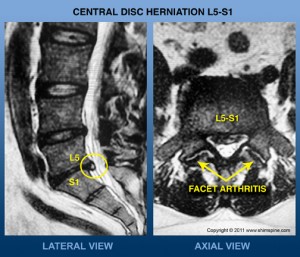MRI Scans
MRI Scans
For patients with continued back or neck pain, and a component of arm or leg radiation, a MRI may be ordered. The MRI is a very useful tool. From what we know, it causes very little radiation exposure. And it gives good details about the soft tissues of the imaged body part.

In the spine, a high-quality MRI gives excellent images, of the bone, ligaments, muscles, discs, and nerves. It is an excellent tool to confirm the diagnosis. Please understand that MRI’s by themselves do not give a diagnosis. The MRI may identify abnormalities that are asymptomatic and completely unrelated to the complaints. Your physician will order this test, but he/she will also determine if these findings are truly related to your current complaints. That statement may be a bit confusing so let me give you an example. Let’s say you have left hip pain. It does not go away after many months and your doctor decides to get an MRI of the pelvis that shows both hips. The left hip MRI is normal, but the right hip MRI shows arthritis. The MRI report states Arthritis of the Right Hip. Does your doctor now say, “the reason for your left hip pain is right hip arthritis”? Of course not. While the cause of the left hip pain is not apparent, the right hip arthritis has nothing to do with the pain.
Recently, many patients complain that there has been difficulty obtaining authorization by insurance companies for the study. The reason for this comes down to resource management. The cost for this test is significant, and oftentimes, after the test is obtained, patients resolve their symptoms. In this situation, it can be argued that the test (and therefore the expense) was not necessary for the ultimate outcome. Currently, most insurance companies have adopted a stance that before an MRI is ordered, a certain period of time is necessary to try medications, therapy, and exercises. Obviously, if the patient has more significant findings such as progressive weakness, bowel or bladder dysfunction, or pain severe enough to be admitted to the hospital, an MRI would be obtained.
Many patients have concerns about claustrophobia, and the MRI. Unfortunately, the MRIs are often performed in a cylindrical confine. This is often necessary to obtain the highest quality images. While patient’s preferred the open style MRIs, physicians, and particularly surgeon’s rely on the best image qualities to decide the best treatment options. As of today, the open style MRIs have signifcantly improve, but most do not provide the best quality images. If patients have concerns about claustrophobia, premedication with a sedative may be beneficial.
Last modified: October 22, 2019









